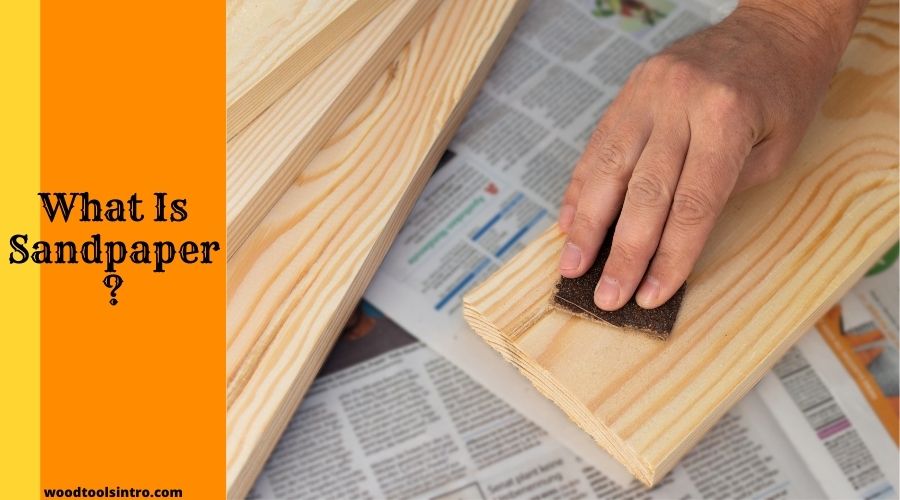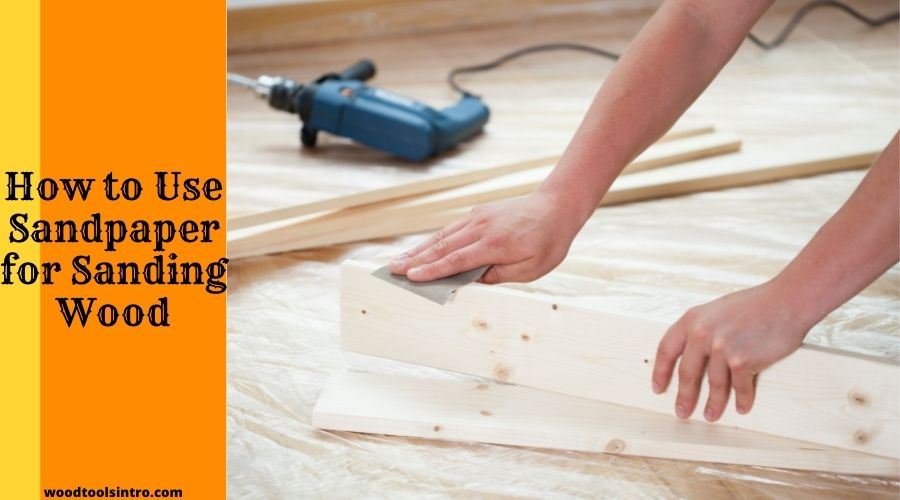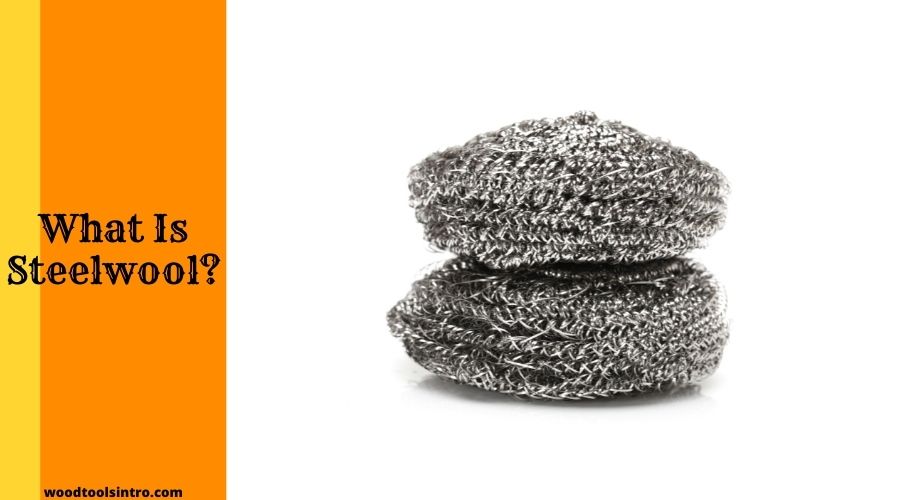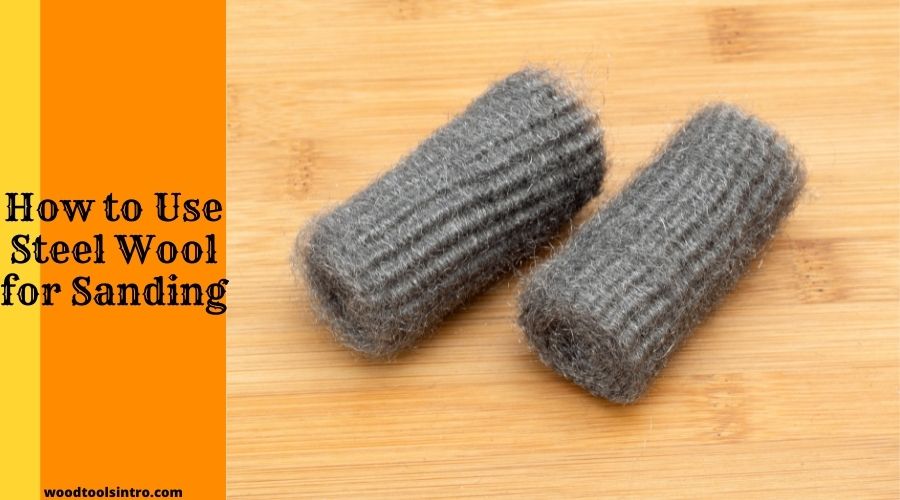You might get overwhelmed while choosing a single piece of abrasive material among sandpaper vs steel wool. I can understand your situation as most people tend to use them interchangeably!
But to know what you really need to pick up, you need to learn more deeply about their definitions, usability, functionality, and most importantly, the differences.
And this is what this write-up is all about. Stay tuned to get every detail about them.
What Is Sandpaper?

In the fewest possible words, sandpapers are known as “coated abrasive” made with a combination of cloth and paper sheets. Along with that, they incorporate glued abrasive material that is noticeable to one face.
There are so many types of sandpapers available in the shop used for different purposes.
For instance, you are allowed to use it for either sanding, polishing, or cleaning purposes. Furthermore, I’ve seen many people these days who use sanding pads for cleaning glasses as well.
How to Use Sandpaper for Sanding Wood: Step by Step Guide

Using sandpaper isn’t rocket science! That said, you need to get familiar with the correct technique while using it for sanding wood. So follow me and let me show you how you can do this:
Step-1: Figuring Out the Grade
This is undoubtedly the first step to looking for the size of sandpaper. Pick up a grit of 100 (fine) if you tend to go for smooth surfaces. But for tough surfaces, choose a grit of 60 (lower).
Step-2: Using Even Strokes
According to experts, you shouldn’t offer too much pressure or force while sanding wood in the same direction.
Thus, you can confirm a precise finish. Go on sanding till you reach your desired finish.
Step-3: Wiping Off the Surface
Make sure to wipe off the entire surface of wood using a piece of rag or clean cloth.
In case you still find any imperfections, feel free to switch to a 120 grit in terms of sanding wood with sander once again.
What is Steel Wool?

Steel wool tends to be familiar with a few names these days, like wire wool, iron wool, and wire sponge.
Actually, it’s a package of thinner steel filaments used for so many purposes, including polishing metal objects, cleaning windows, sanding surfaces, and cleaning cookware.
Unlike sandpaper, steel wools include low-carbon steel as a primary material, which has made in numerous grades.
Can Steel Wool Be Used for Sanding Wood?
Metal craftsman, jewelers, and woodworkers generally use steel wools in terms of polishing and cleaning purposes.
Basically, you’ll find several kinds of steel wool grades, including finest (0000) and coarsest (5).
Talking about the coarse one, it’s suitable for removing paints, while finest grades tend to be a bit useful for sanding wood and such materials.
But it may not be the best choice for sanding wood compared to sandpapers.
How to Use Steel Wool for Sanding: Step by Step Guide

As an alternative, you can take assistance from steel wools in terms of sanding. And this is how you’re allowed to perform it:
Step-1: Getting the Finest Gauge
The title says it all; to get the best result in sanding through steel wool, you need to get yourself the fine steel wool gauge that is 0000.
If you think about doing delicate work, finest gauge should be your ultimate cup of tea!
Moreover, this will help you reach tight areas, unlike sandpaper. This is one of the key benefits of using steel wool.
Step-2: Using Wood Wax
Onto your desired piece, ensure to apply a certain amount of wood wax as evenly as possible. Keep on rubbing till you end up with smoother finish.
Afterward, wait for a couple of minutes or so, for which the wood wax gets well-settled onto that surface.
Note: It’s is okay to apply 2-3 times of wax layers to get the best smoother finish.
Step-3: Providing Less Pressure while Sanding
Since steel wool consists of thinner steel filaments, you may ruin the whole appearance of your desired piece of material while sanding by pressing too hard. KEEP IN MIND!
Difference between Steel Wool and Sandpaper
Let me show you some of the major and noticeable differences between the sandpaper and steel wool:
Ease of Access
Unlike sandpaper, steel wool has the ability to access tight areas, corners, and such places. Ask me why? This is because it can form almost every shape easily.
Difference in Compatibility
Steel wools are best known for using on the finishes of oil-based instead of water-based. Besides, it tends to get rusty over time, making it non-suitable for watery surfaces or finishes.
Sandpaper, on the flip side, is compatible with both water-based and oil-based finishes.
Difference in Grades
If you ask me which steel wool is ideal for sanding, the answer will be finest grades. In contrast, sandpapers are of different types of grits, and most of them are suitable for sanding several materials.
Which One Is Best for Wood Sanding?
Although both sandpaper and steel wool are abrasive belt types, they both can’t be similarly the best choice for wood sanding.
According to my research and experts’ statements, steel wools are better for polishing objects made of metal and cleaning household cookware.
And when it comes down to the sandpaper, the majority of woodworkers use it to sand wood, getting the satin-finished surface without much effort!
Benefits & Drawbacks of Using Steel Wool in Wood Sanding
Benefits
The good thing about using steel wool in wood sanding is that it has the ability to reach tight areas as it is so flexible. If you tend to do delicate work, finest gauge should be your only choice!
Drawbacks
While sanding wood through steel wool, there is a high chance of ending up with unexpected scratches and marks on your desired surface.
Besides that, this isn’t compatible with water-based filaments or surfaces as it gets rusty over there!
Benefits & Drawbacks of Using Sandpaper in Wood Sanding
Benefits
Sandpaper has a number of different sizes of grits, ranging from fine to coarse. And the good thing is that it can work pretty smoothly when you go for wood sanding, especially the finest grit.
Also, unlike the steel wool, it won’t offer any residue or marks on your desired surface as it is kind of smoother.
Drawbacks
Compared to the steel wool, you’ll find sandpaper less flexible which makes it hard to reach in tight areas.
Frequently Asked Questions (F.A.Q’s):
Although steel wool and sandpaper are considered different types of abrasives, the 0000 grit steel has equality to the grit of 400 sandpaper
To be honest, no. They are made of different kinds of materials, and their usability isn’t the same, which I’ve already mentioned above. Nonetheless, both steel wool and sandpaper are friendly with sanding wood.
Yes; along with polishing, the finest grade is friendly with a couple of sanding jobs. But you need to make sure you’re pressing gently while sanding. If not, then the furniture may end up with scratches.
Last Words!
The battle of sandpaper vs steel wool ends here. As you can see, both of them are great in their own way is they’re suitable for some specific tasks.
But I’d suggest getting yourself sandpaper for sanding wood pieces, and steel wool for polishing or cleaning household cookware.
Related Articles

I am Imtiaj Islam. I am a wood working enthusiast, having 6 years of experience in carpentry work. I have a BBA graduate degree from Chittagong College. I got vocational training on wood works from Korean Polytechnic out of the quest and zest he has for carpentry as well. I take several wood projects and keep testing different woodworking tools for comfortable and perfect work. I just love playing with woods and machines.
